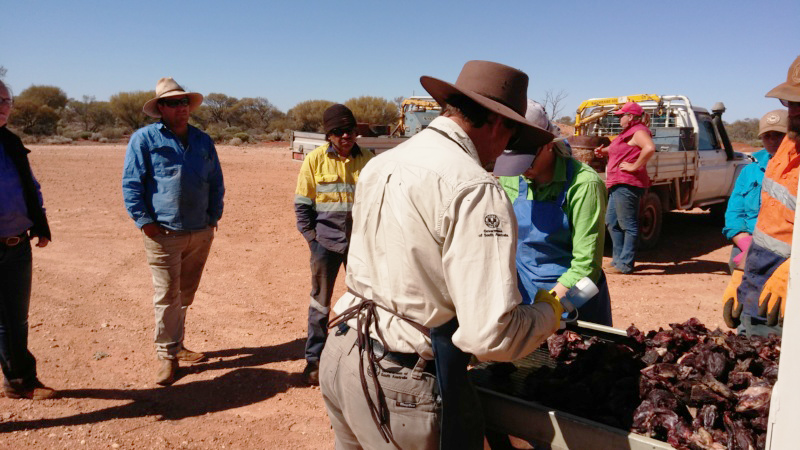2 December 2019
A strategy to manage wild dogs in the SA Arid Lands region over the past decade through the Biteback program has resulted in land managers putting in place a coordinated effort to reduce wild dog numbers.
The Biteback program, which began in 2009, is managed by the SA Arid Lands Natural Resources Management Board with funding support from the SA Sheep Advisory Group and Australian Wool Innovation. It also works closely with Primary Industries and Regions SA, which funds trappers to provide additional support to land managers.
Covering an area of more than 200,000km2 inside the SA Dog Fence, two Biteback project officers work with 181 landholders managing 200 pastoral lease, freehold and national parks properties. To assist with coordination, properties have been divided amongst 21 coordinated groups with up to 23 properties in each.
Biteback provides land managers with bi-annual 1080 bait injection services complemented by an annual aerial baiting program targeting inaccessible areas. In addition land managers also have year round access to subsidised manufactured baits.
Over the past 10 years, land managers have been supported to lay almost 1.7million baits. This includes 1,271,923 ground baits delivered at bait injection services and 420,812 delivered through aerial baiting.

SA Arid Lands NRM Biteback Team Leader Greg Patrick said Biteback has marked a decade of success with the release of its 10-year report with landholder engagement and training also a key focus of the program.
“Delivery of extension activities such as trapping workshops have provided a direct improvement and adoption of those skills by landholders and has support the recommended integrated approach to control,” Greg said.
“Through these activities and direct engagement and coordination of land managers, it has seen landholder engagement increase from 59 to 82 per cent in that time.”
In 2017, the Biteback program delivered an Australian first with the development of the ‘Best Practice Guidelines for Wild Dog Control’. The Guidelines provide a benchmark for landholders and the NRM Board to assess the level of management undertaken by individual properties and promote a proactive and reactive level of baiting depending on wild dog activity.
“We’re proud of what we’ve been able to achieve and look forward to continuing our work with landholders to reach a level of control possible under the Best Practice Guidelines,” Greg said.
You can find a copy of the report and more information about the Biteback program on our website.
Share